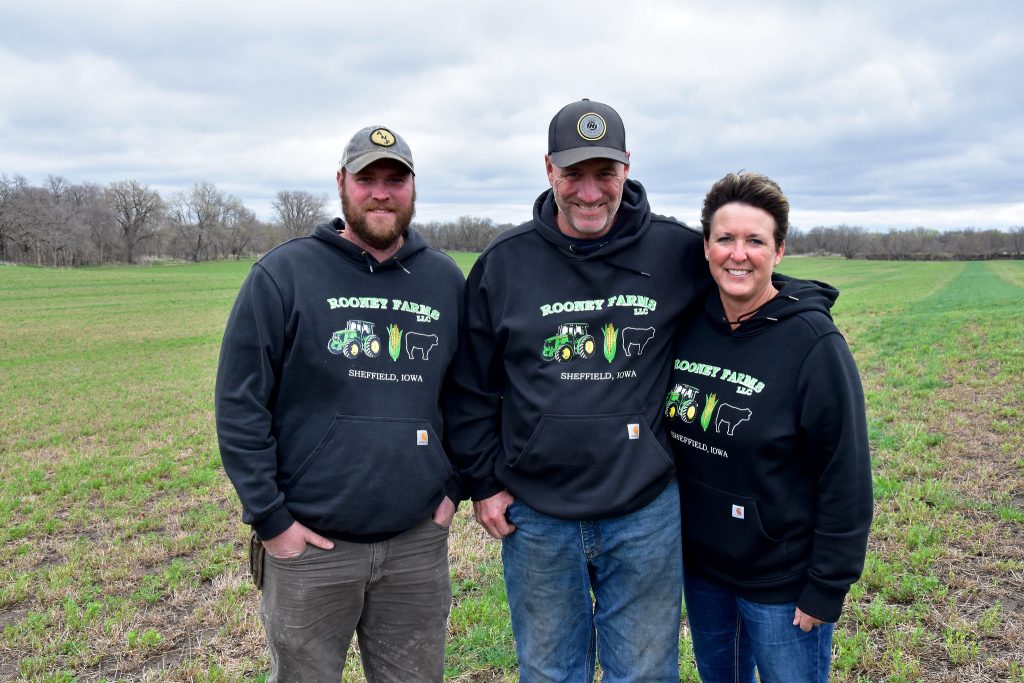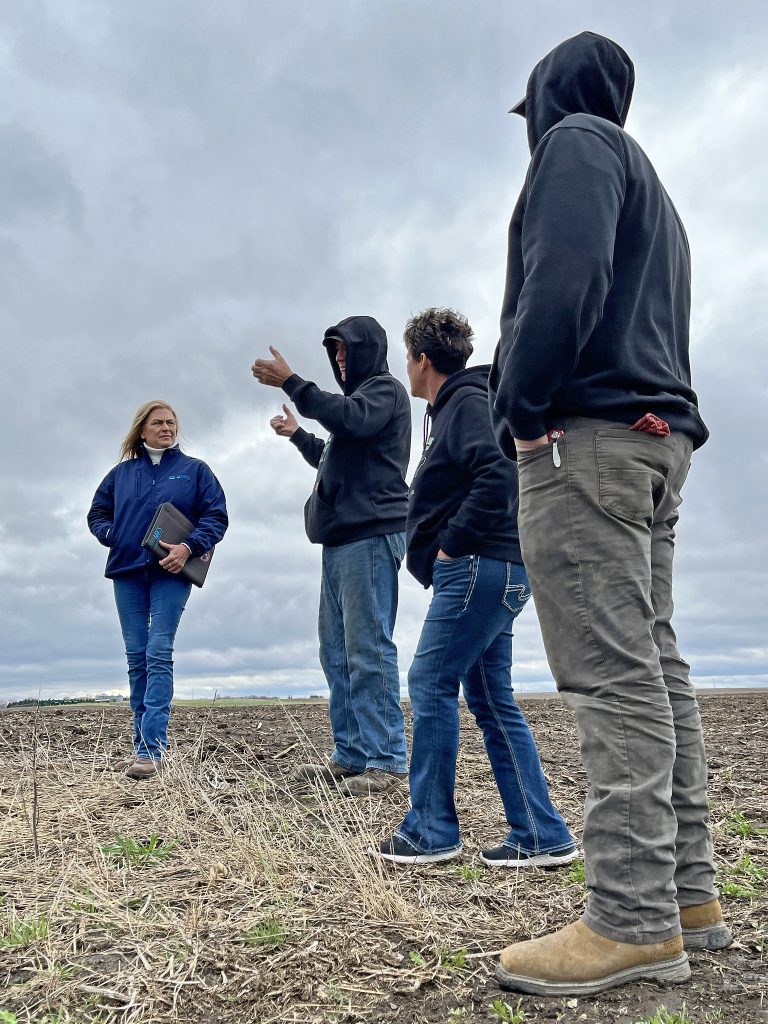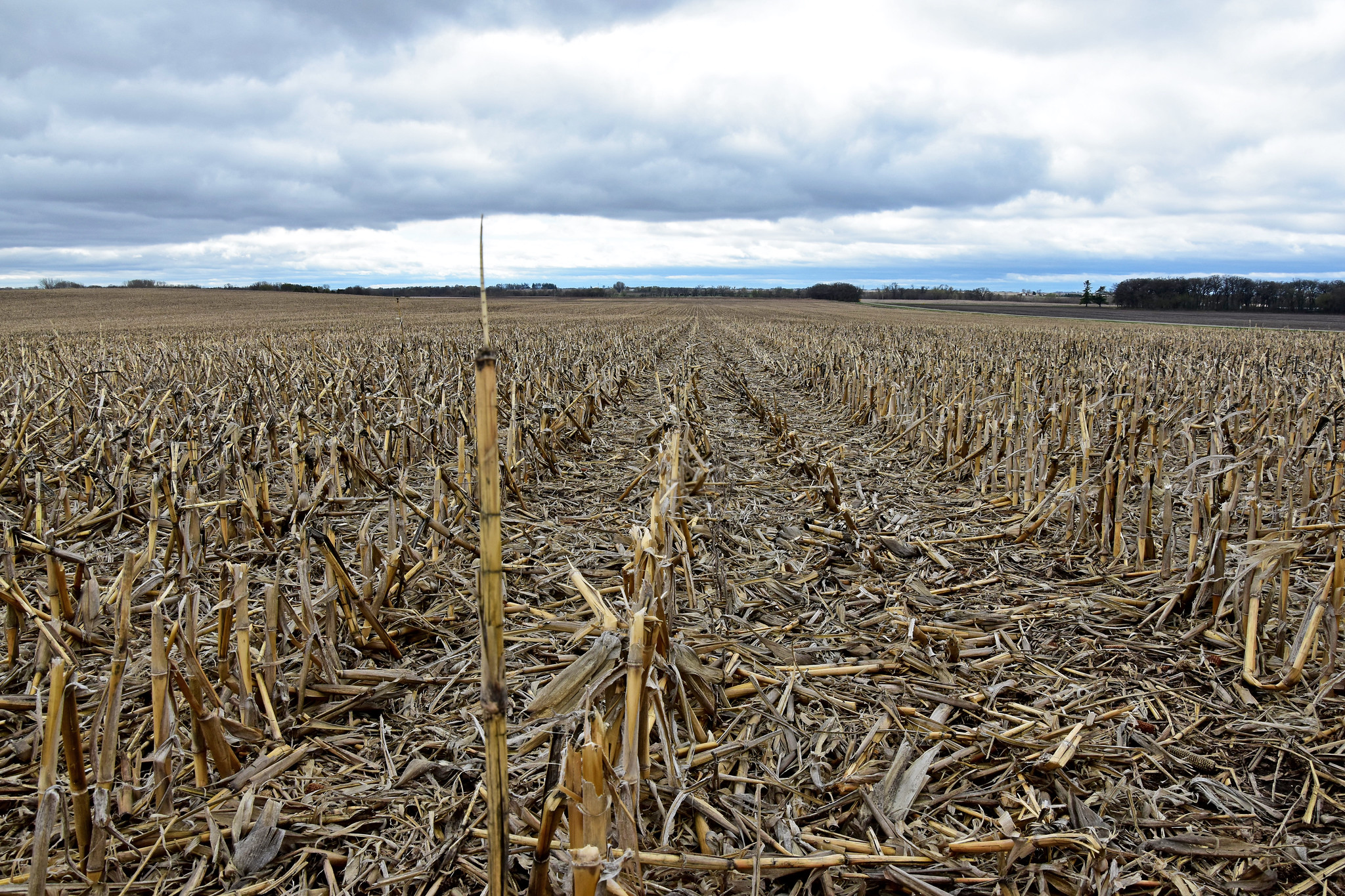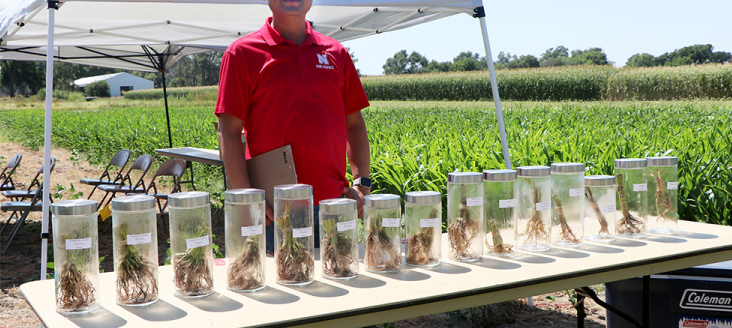CSP enhancements are pushing Rooney Farms to the next level of conservation, as the family farming operators experience the soil health, water quality and economic benefits of no-till farming, nutrient management and cover crops.

Enhancements through the Conservation Stewardship Program (CSP) and a handful of other programs and resources are pushing Rooney Farms, LLC to the next level of conservation, as the family farming operators experience the soil health, water quality and economic benefits of no-till farming, nutrient management, and cover crops.
A self-proclaimed “electrician by trade and farmer by heart,” Jeff Rooney grew up on the family’s Century Farm near Daugherty in Cerro Gordo County in north-central Iowa. He helped his father on the farm for several years, as he continued his full-time career as an electrician.
Beginning of the Conservation Journey
Prior to signing his first CSP contract in 2017, Rooney said his conservation journey began in 2012, when he and his wife, Karla, began farming with friends Ken and Carol Boehlje of Rockwell. Rooney says Ken advocated for no-till soybeans into cornstalks to save on high fuel costs on a low-producing, rock-filled crop field.
“When we tilled that ground, we kept bringing up more rocks to the surface. But when we no-tilled, we hardly hit any rocks when we planted,” said Rooney. “That turned out great. It was sort of an aha moment that made us think we might not need to be doing so much tillage.”
The field was also easier to combine and had less weed pressure, so the Rooneys and Boehljes decided to try no-till on other fields. They made equipment adjustments like adding pneumatic trash whippers and downforce to tackle no-till corn more easily into soybean stubble.
A Change In Plans
In 2016, Ken Boehlje passed away after a terminal illness, which was not only heartbreaking but occurred in the first year of a five-year deal the families agreed upon where the Rooneys incrementally purchased the Boehlje’s equipment and rented their acres.
Rooney decided to sell his electrical business that was located on his acreage near Sheffield and work with his son Justin to expand his farming footprint.
Cover Crop Trial and Error
By 2018, Jeff’s son, Justin, was out of college and getting into farming. He started a cow/calf operation at the Dougherty family farm, and they hoped they could supplement feed with cover crops. They attended a field day in nearby Sheffield where speakers encouraged first-time cover croppers to “experiment” on poor performing cropland. “We felt like we had the perfect field for what they were talking about, so we tried it,” said Rooney.

They planted cereal rye with a mix of triticale, but time and weather did not cooperate that year. “It was a bit of a disaster,” said Rooney. “We tried to chop it and feed it to the cows and then mother nature didn’t cooperate, and it was like straw. Mostly, we learned what not to do.”
The Rooneys didn’t give up on cover crops. In fact, they worked with the USDA’s Natural Resources Conservation Service (NRCS) office in Mason City to plan several more acres of cover crops through the Environmental Quality Incentives Program (EQIP). They signed a three-year contract to incorporate a cover crop livestock feed mix.
“We were one of the few trying cover crops in the county,” said Rooney. “We found the cows like triticale better than cereal rye, so we changed the mix to heavier triticale. We harvested a lot of tonnage off that field. We no-tilled into it and got great results.”
The father-son duo is now increasing acres across Cerro Gordo and Franklin Counties. “No-till is allowing us to save time, fuel, and money on labor,” said Jeff. “Farmers who till around here need to yield at least 10 bushels an acre more (on beans) than us to match the profit.”
CSP Takes Conservation to Next Level
With their first CSP contract in 2017, the Rooneys utilized soil health, nutrient and pest management conservation enhancements to add innovation and improve their cropping system.
Through CSP, NRCS works one-on-one with producers to develop a conservation plan that outlines and enhances existing efforts, using new conservation practices or activities, based on management objectives for your operation. Producers implement practices and activities in their conservation plan that expands on the benefits of cleaner water and air, healthier soil, and better wildlife habitat, all while improving their agricultural operations.
In one enhancement, Jeff said he conducted a field-to-field five-year comparison between no-till and conventional tillage. With equal inputs and crop varieties, he documented yield and net profits between the two fields. He says the results were eye-opening. “Every year, no-till was more profitable by at least $50 an acre,” he said. “Some years it was $100 per acre more profitable.”
So pleased with CSP, Rooney signed another five-year CSP contract in 2022. This time, the Rooneys included seven new conservation enhancements, including a crop rotation with alfalfa, converting some cropland acres to waterways and grass strips, and improving nutrient uptake efficiency and reducing the risk of nutrient losses on all his acres.
“CSP has pushed us to be better at nitrogen management, to keep it in the same wheel tracks for compaction, precision and scouting,” said Rooney. “CSP makes you try new things and document it.”
Midway through his current CSP contract, Rooney says he’s already prepared to extend it for another five years. “I have a list of enhancements I want to do,” he said, mentioning forestry and wildlife habitat-improving projects that he would like help with.
A lot of producers don’t think like the Rooneys, says NRCS District Conservationist Lissa Tschirgi. “A lot of producers are looking at yields or they are resistant to change,” she says.
Rooney admits he has a different outlook than many other farmers. “Are you doing everything in your life the same as you were 20 years ago? Probably not, then why farm the same as you were 20 years ago?” he said. “Think outside the box.”
The Rooneys are now custom farming on several neighboring farms, where landowners are asking them to use no-till and other regenerative practices. They are also participating in the Truterra® Carbon Program as well as a nitrogen management program.
“We hope others will start to see the benefits of conservation farming,” said Jeff. “With the giant loss of topsoil over the past 150 years, our most valuable resource is blowing and washing away. If we aren’t stewards of the land, who will be?”
For more information about conservation practices and programs to protect the natural resources on your land, visit your local NRCS office or go to www.nrcs.usda.gov/ia.




